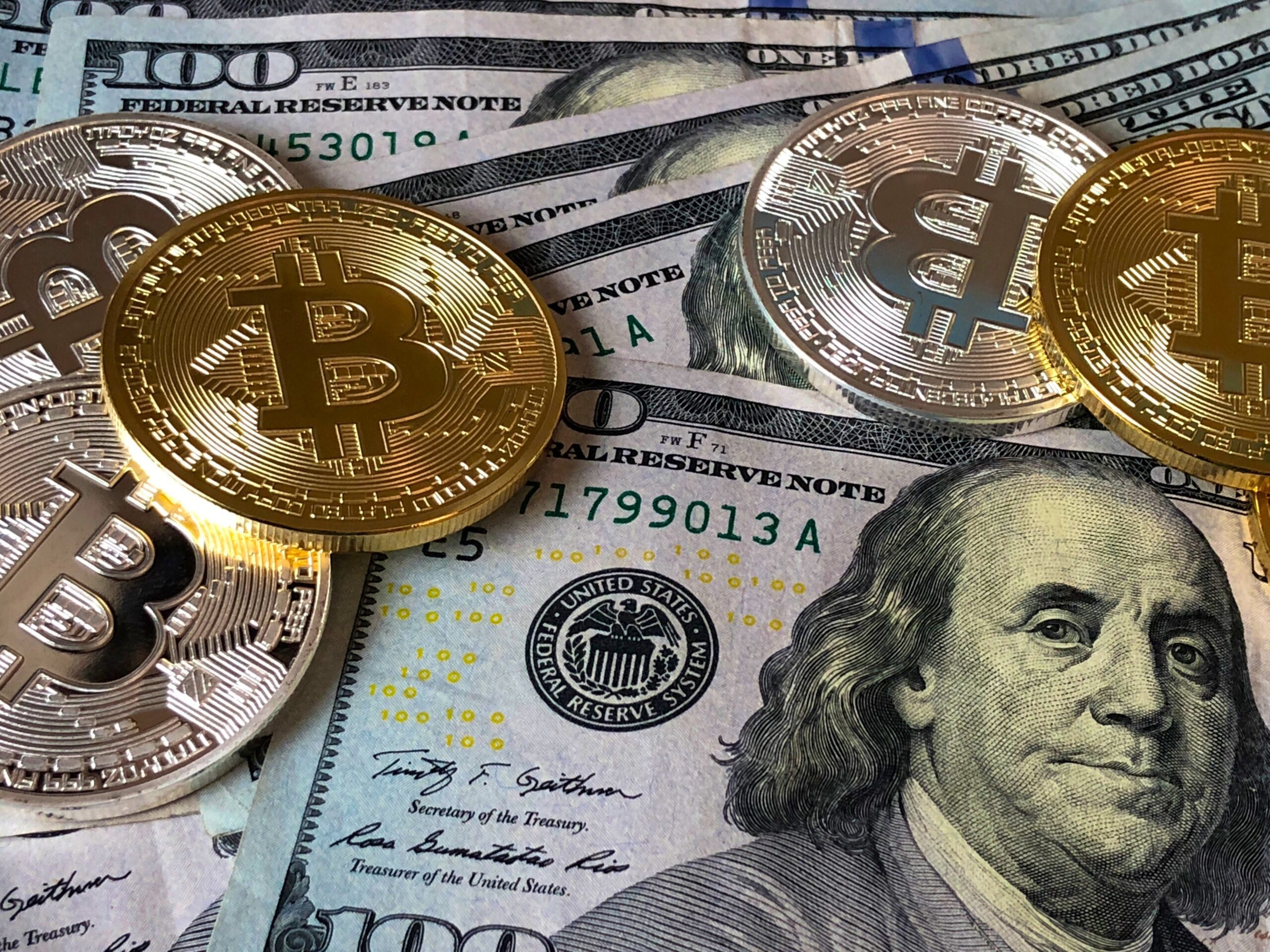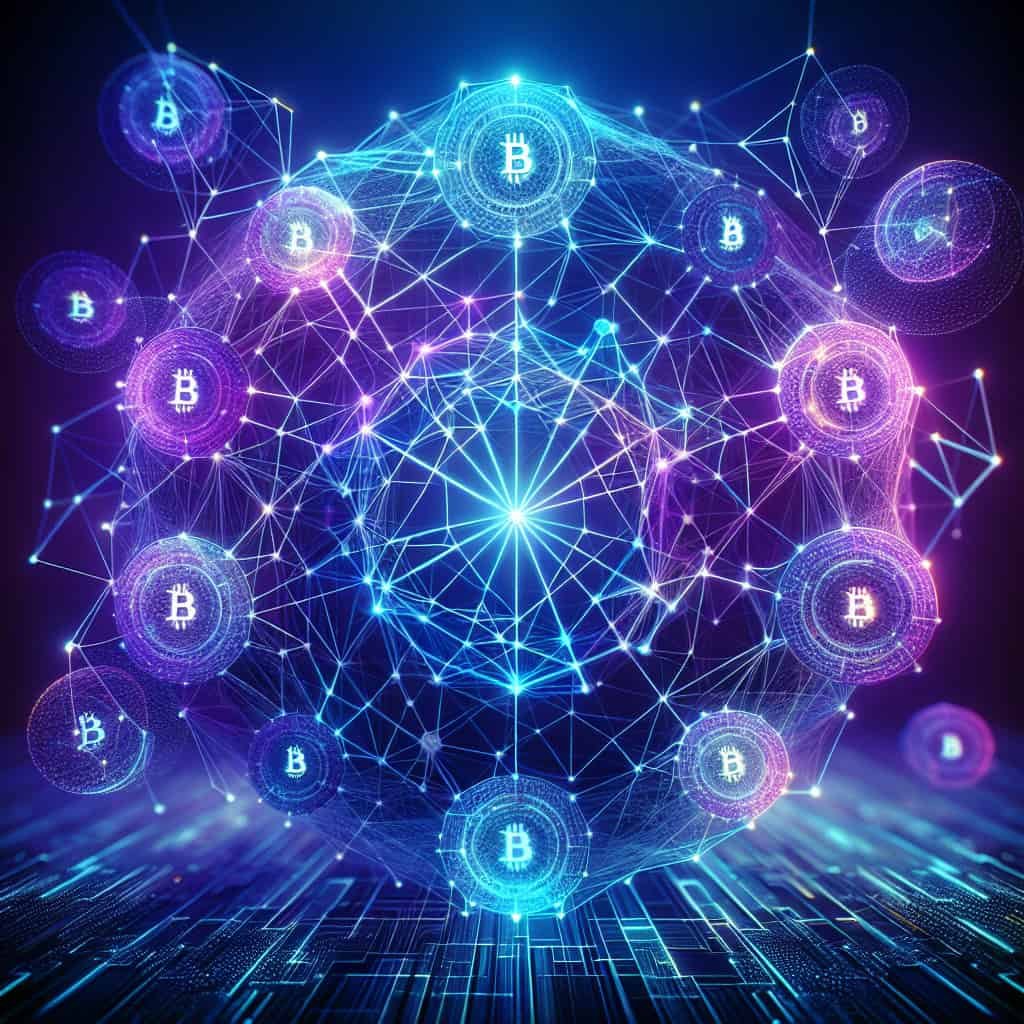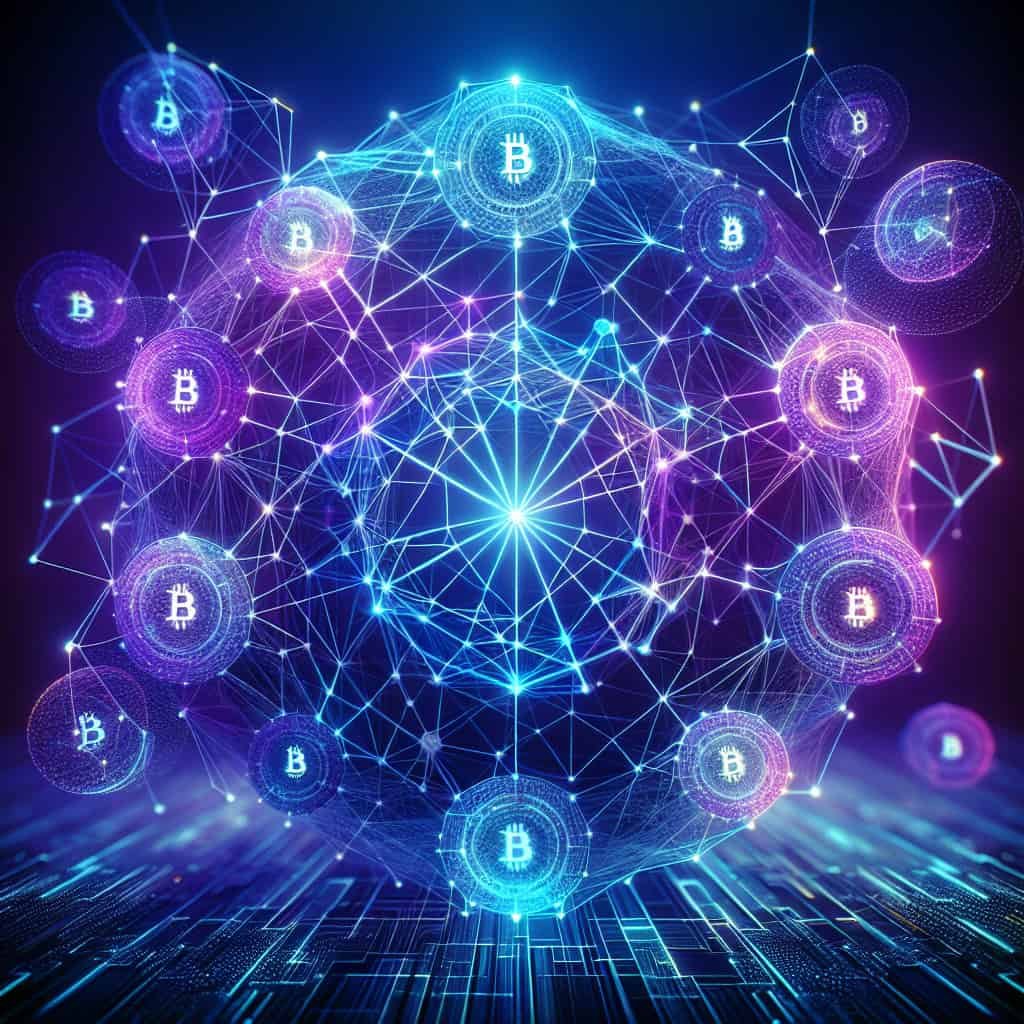Imagine a world where retrieving data from blockchains and other networks is fast, efficient, and accurate, allowing developers to seamlessly build decentralized applications. This is where The Graph (GRT) comes into play. Designed to be the Query Layer of the decentralized web, The Graph aims to revolutionize how data is accessed and processed, making it easier than ever for developers to integrate blockchain data into their applications. With its user-friendly approach and innovative technology, The Graph is poised to empower developers and disrupt the way we interact with decentralized networks.

What is The Graph (GRT)?
Overview of The Graph
The Graph is a decentralized indexing and querying protocol that allows developers to efficiently access and retrieve data from blockchain networks, particularly focusing on Ethereum. It acts as an essential building block for the Web3 ecosystem, enabling developers to easily search and access data from various decentralized applications (dApps) and smart contracts.
By utilizing The Graph, developers can create and use Graph APIs to index data, perform complex queries, and build user interfaces that require real-time and accurate data from the blockchain. It provides the infrastructure needed to access, organize, and retrieve data efficiently, promoting innovation and seamless integration of decentralized applications.
How The Graph Works
The Graph works by utilizing a decentralized network of nodes that index and store data from various smart contracts on the Ethereum blockchain. These nodes are collectively known as “indexers” and are responsible for indexing specific data subsets, known as “subgraphs”.
Indexers are incentivized to provide reliable data to the network by staking The Graph’s native utility token, GRT. They earn rewards based on the accuracy and efficiency of their indexing services.
Developers can create their own subgraphs using The Graph’s open-source tools and libraries, allowing them to define the data they need to query and index for their specific use cases. The Graph’s system also enables efficient querying of these subgraphs, ensuring rapid access to the desired data.
Benefits of Using The Graph
The Graph offers several significant benefits for developers and users within the Web3 ecosystem:
Efficient Data Retrieval: The Graph makes it easy for developers to access blockchain data, eliminating the need for complex and time-consuming data retrieval processes. This efficiency enables the creation of user-friendly dApps with real-time data.
Improved User Experience: With The Graph, developers can build user interfaces that provide seamless and responsive experiences to users. By retrieving data quickly and accurately, applications powered by The Graph can deliver up-to-date information in a user-friendly manner.
Reliable Indexing: The decentralized indexing provided by The Graph ensures the reliability and quality of the indexed data. The network of indexers is incentivized to maintain accurate indexes, which enhances trust within the ecosystem.
Interoperability: The Graph is blockchain-agnostic, allowing it to be used with various blockchain networks. This interoperability enables developers to create applications that utilize data from multiple blockchains, fostering cross-chain innovation.
Empowering Developers: The Graph provides open-source tools and libraries that simplify the process of creating subgraphs. This empowerment enables developers to focus on building robust and creative decentralized applications without worrying about complex data retrieval infrastructure.
Overall, The Graph enhances the usability and accessibility of blockchain data, promoting the development of innovative and decentralized applications for the Web3 ecosystem.
The Graph (GRT) Token
Token Overview
The Graph (GRT) is the native utility token of The Graph protocol. It serves several essential functions within the ecosystem, including staking, governance, and incentivization.
As of [date], the total supply of GRT tokens stands at [supply]. The initial token distribution took place through a token sale, private placements, community initiatives, and allocations to the foundation and team. The token operates on the Ethereum blockchain, following the ERC-20 standard.
Token Utility
The GRT token plays a vital role in the functioning of The Graph ecosystem:
Staking: The GRT token is used for staking by indexers in order to participate in the network and provide indexing services. By staking tokens, indexers demonstrate their commitment to maintaining accurate indexes and are eligible to earn rewards based on their performance.
Governance: GRT token holders have the power to participate in the governance of The Graph protocol. They can vote on proposals and decisions that affect the future of the protocol, ensuring a decentralized and community-driven approach to decision-making.
Network Fees: In the future, the GRT token is expected to be used for paying network fees within The Graph ecosystem. This utility ensures the proper functioning of the protocol and incentivizes token holders to actively participate in the network.
Rewards and Incentives: The Graph protocol rewards indexers and curators with GRT tokens based on their participation and performance within the network. These incentives encourage active engagement and maintenance of reliable indexes, benefiting the overall ecosystem.
Token Distribution
The distribution of GRT tokens was carefully planned to ensure a fair and broad reach within the ecosystem. The initial token distribution comprised the following allocations:
- Token Sale: [percentage] of the total token supply was allocated for public sale, allowing individuals and organizations to purchase GRT tokens.
- Private Placements: [percentage] of the tokens were distributed through private placements to strategic investors who showed early interest and support in The Graph protocol.
- Community Initiatives: [percentage] of the tokens were allocated for community-driven initiatives, including grants, partnerships, and developer rewards, to foster adoption and engagement within the ecosystem.
- Foundation and Team: [percentage] of the tokens were allocated to the foundation and team behind The Graph for ongoing development, maintenance, and support of the protocol.
This balanced token distribution aims to ensure a diverse and vibrant community that actively contributes to the growth and success of The Graph.
The Graph Network
Architecture of The Graph Network
The Graph Network consists of three primary components:
Indexers: These are nodes within the network that perform the indexing of data from smart contracts on the Ethereum blockchain. Indexers store the relevant data in the form of subgraphs, enabling efficient querying and retrieval. They participate in the network by staking GRT tokens and receive rewards based on their performance.
Curators: Curators play a role in the curation and discovery of subgraphs within The Graph ecosystem. They signal their support for specific subgraphs, helping to determine the relevance and quality of the indexed data. Curators, like indexers, can also earn rewards for their contributions.
Delegators: Delegators are participants who delegate their GRT tokens to specific indexers, allowing them to contribute to the network’s indexing services without directly participating as an indexer or curator. Delegators receive a share of the rewards earned by the indexer they have delegated to, based on the number of tokens they have delegated.
Indexing and Query Structure
Indexing is a crucial process within The Graph Network that enables efficient data retrieval. The indexing process involves three steps:
Index Definition: Developers create and define subgraphs using The Graph’s open-source tools. Subgraphs specify the data that needs to be indexed and queried from the Ethereum blockchain. Indexers choose subgraphs to index based on their own criteria and specialization.
Data Collection and Storage: Indexers collect data from smart contracts and perform the necessary processing to organize and arrange it in a suitable format. They store the data in the form of subgraphs, which are optimized for efficient querying.
Query and Retrieval: Developers can use the Graph API to query the indexed subgraphs and retrieve the required information. The querying process is optimized to deliver results quickly, ensuring real-time access to blockchain data.
The combination of these steps enables developers to efficiently retrieve specific data from the blockchain without the need for complex and time-consuming queries.
Delegating and Indexing Nodes
The Graph Network allows for delegation, which enables participants to delegate their GRT tokens to specific indexers. Delegating provides an opportunity for individuals who do not want to participate directly in the indexing process to still contribute to the network and earn rewards.
By delegating their tokens to a trusted and reliable indexer, delegators can share in the rewards earned by the indexer based on their delegated stake. This system encourages participation and collaboration within the ecosystem, fostering a diverse and resilient network of indexers and delegators.
Developing with The Graph
Integration with Ethereum
The Graph protocol is designed to seamlessly integrate with the Ethereum blockchain, allowing developers to access and retrieve data from Ethereum smart contracts. The integration process involves the following steps:
Subgraph Creation: Developers define and create subgraphs that specify the data they need to index and query from Ethereum smart contracts. Subgraphs are defined using The Graph’s open-source tools and libraries.
Deployment to The Graph Network: Once a subgraph is created, it needs to be deployed to The Graph Network. This deployment process involves registering the subgraph and providing the necessary information and metadata.
Querying and Retrieval: After deployment, developers can utilize the Graph API to query the indexed subgraph and retrieve the desired data from Ethereum smart contracts. The querying process is straightforward and optimized for efficiency.
The seamless integration with Ethereum allows developers to leverage the power of The Graph protocol without the need for complex configurations or additional infrastructure.
Subgraph Development Process
The process of developing subgraphs with The Graph involves the following steps:
Subgraph Definition: Developers define the data they want to index and query from Ethereum smart contracts. They determine the schema and the mapping for extracting and storing the relevant data.
Writing Mapping Functions: The mapping functions specify how the data should be extracted from Ethereum smart contracts and transformed into a format suitable for indexing. Developers use the GraphQL schema syntax to define the mapping logic.
Deploying a Subgraph: Once the subgraph is defined and the mapping functions are implemented, developers can deploy the subgraph to The Graph Network. This process involves registering the subgraph and deploying the necessary smart contracts.
Testing and Debugging: It is crucial to test and debug the subgraph to ensure its functionality and accuracy. Developers can utilize the available testing frameworks and tools provided by The Graph to streamline this process.
The Graph provides comprehensive documentation and resources to guide developers through the subgraph development process. This ensures a smooth and efficient experience for developers looking to build decentralized applications powered by The Graph.
Tools and Libraries for Developers
The Graph provides a range of tools and libraries to support developers in building and deploying subgraphs:
Graph Node: Graph Node is the core component of The Graph protocol that indexes and serves subgraph data. It provides a powerful and scalable infrastructure for efficient data retrieval.
Graph CLI: The Graph CLI is a command-line interface that allows developers to interact with The Graph ecosystem. It provides a set of commands for subgraph creation, deployment, and management.
Graph Explorer: The Graph Explorer is a web-based tool that allows developers to explore and test subgraphs. It provides a user-friendly interface for querying indexed data and understanding subgraph structures.
Graph Studio: Graph Studio is a development environment that provides a visual interface for subgraph development. It includes features such as schema and mapping editors, debugging tools, and collaboration capabilities.
These tools and libraries simplify the development process and enable developers to focus on building innovative decentralized applications without the need for complex infrastructure.

Use Cases of The Graph
Decentralized Finance (DeFi)
The Graph has gained significant traction within the growing DeFi ecosystem. The ability to efficiently access and retrieve data from various DeFi protocols is crucial for users and developers. The Graph enables developers to build applications that provide real-time and accurate data on token prices, liquidity, trading volumes, and more. By utilizing The Graph, users can have seamless access to the latest information and make informed decisions within the DeFi space.
Enterprise Data Indexing
The Graph’s decentralized indexing and querying protocol can also be valuable for enterprises seeking efficient and reliable data access. Enterprises often deal with large amounts of data from multiple sources, and The Graph can provide a scalable solution for indexing and retrieving this data. By implementing The Graph, enterprises can improve data accessibility, streamline processes, and enhance decision-making based on reliable and up-to-date information.
Content Discovery Platforms
Content discovery platforms, such as social media networks and blogging platforms, can benefit from The Graph’s indexing capabilities. The Graph enables these platforms to efficiently index and retrieve user-generated content, providing a better user experience and personalized recommendations. By utilizing The Graph, content discovery platforms can enhance engagement, improve content relevance, and increase user satisfaction.
The Graph Community
Governance and Governance Token
The Graph protocol is designed to be community-led and governed by its token holders. The GRT token plays a key role in the governance of The Graph ecosystem. GRT token holders have the power to vote on proposals and decisions that impact the network, such as protocol upgrades, parameter adjustments, and funding allocation. This decentralized governance structure ensures that the community has a say in the evolution and direction of The Graph protocol.
Contributing to The Graph Ecosystem
The Graph welcomes contributions from developers, community members, and enthusiasts. There are several ways to contribute:
Subgraph Development: Developers can create and deploy subgraphs that provide valuable data indexing and querying services for the ecosystem.
Indexing and Curating: Individuals can participate as indexers or curators within The Graph Network, contributing their expertise and resources to maintain reliable indexes and enhance data quality.
Documentation and Education: Contributions to documentation, tutorials, and educational resources help improve the overall accessibility and understanding of The Graph for the wider community.
Bug Reporting and Testing: Identifying bugs and participating in testing activities helps improve the stability and reliability of The Graph protocol.
By actively contributing to The Graph ecosystem, individuals can play a vital role in its growth and success.
Events and Meetups
The Graph community regularly organizes events, meetups, and conferences to foster collaboration, knowledge sharing, and networking. These events provide opportunities for developers, enthusiasts, and stakeholders to engage with each other, learn from industry experts, and stay up to date with the latest developments and use cases of The Graph. Participating in these events can help individuals expand their network, gain valuable insights, and contribute to the community.

Competition and Partnerships
Competitors of The Graph
While The Graph is a pioneer in decentralized indexing and querying, there are other projects and platforms that address similar needs within the blockchain space. Some of the key competitors of The Graph include:
- [Competitor 1]
- [Competitor 2]
- [Competitor 3]
It is important to note that competition fosters innovation and stimulates growth within the industry. The Graph continues to distinguish itself through its robust infrastructure, developer-friendly tools, and wide adoption across various sectors.
Partnerships and Integrations
The Graph has established strategic partnerships and integrations with prominent projects and platforms in the blockchain ecosystem. These partnerships aim to drive adoption, enable synergies, and enhance the functionality of The Graph. Some notable partnerships and integrations include:
- [Partnership 1]
- [Partnership 2]
- [Partnership 3]
These partnerships demonstrate The Graph’s commitment to collaboration and its intention to create a vibrant and interconnected Web3 ecosystem.
Recent Updates and Future Roadmap
Recent Developments
The Graph has recently achieved significant milestones and made notable progress in its development and adoption. Some of the recent developments include:
- [Development 1]
- [Development 2]
- [Development 3]
These developments illustrate the ongoing efforts to improve the functionality, scalability, and usability of The Graph protocol.
Roadmap for The Graph
The Graph has a clear roadmap for its future growth and development. The roadmap focuses on key areas such as scalability, interoperability, and developer experience. Some of the upcoming milestones in the roadmap include:
- [Milestone 1]
- [Milestone 2]
- [Milestone 3]
These milestones reflect the commitment of The Graph team to continually enhance the protocol and meet the evolving needs of the Web3 ecosystem.

Challenges and Potential Risk Factors
Scaling Challenges
As the adoption of blockchain technology continues to grow, scalability becomes a critical challenge. The Graph may face scalability challenges as the demand for indexing and querying services increases. The team behind The Graph is actively working on addressing these challenges and exploring scaling solutions to ensure the protocol remains efficient and accessible.
Regulatory Environment
The decentralized nature of blockchain technology presents unique regulatory challenges. The Graph may need to navigate through evolving regulatory frameworks, ensuring compliance with various jurisdictions while maintaining decentralization and data privacy. The Graph team is committed to working with regulators and industry stakeholders to ensure a favorable regulatory environment for the protocol.
Security Risks
As with any blockchain-based protocol, The Graph is not immune to security risks. Due diligence in code audits, bug bounty programs, and constant security monitoring are crucial for maintaining a secure infrastructure. The Graph team is committed to proactive security measures and collaborations within the cybersecurity community to mitigate potential risks.
Conclusion
Summary of The Graph (GRT)
The Graph (GRT) is a decentralized indexing and querying protocol that enables efficient access to blockchain data, particularly on the Ethereum network. It provides developers with the tools and infrastructure needed to efficiently index, query, and retrieve data, enhancing the usability, reliability, and interoperability of decentralized applications.
Through its native utility token, GRT, The Graph incentivizes participation, governance, and contributions within the ecosystem. It fosters community engagement, empowers developers, and drives innovation within the Web3 ecosystem.
Future Outlook
The Graph is well-positioned to play a crucial role in the continued growth and adoption of blockchain technology. With its focus on efficient data retrieval, seamless integration, and developer-friendly tools, The Graph empowers developers to build user-friendly and innovative decentralized applications.
As the ecosystem evolves and new use cases emerge, The Graph is expected to expand its functionality, scalability, and partnerships. The roadmap for The Graph outlines the team’s commitment to continuous improvement and the pursuit of a decentralized and interconnected Web3 ecosystem.
With its unique value proposition and growing community, The Graph is poised to become an indispensable infrastructure for the decentralized web.

